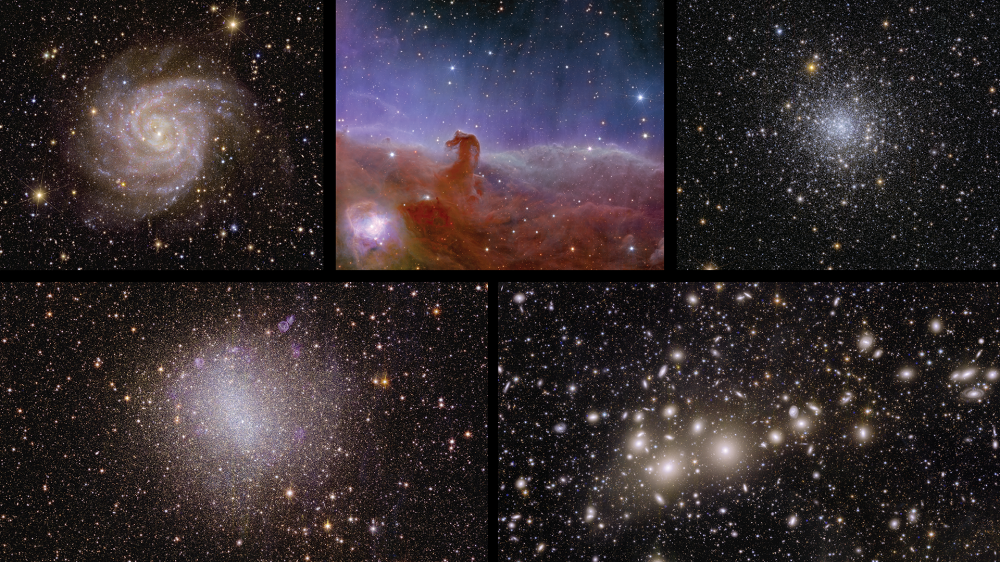
Credit:
ESA/Euclid/Euclid Consortium/NASA, image processing by J.-C. Cuillandre (CEA Paris-Saclay), G. Anselmi, CC BY-SA 3.0 IGO
To reveal the influence of the dark components of the Universe, over the next six years Euclid will be observing the shapes, distances and movements of billions of galaxies. This mapping will cover periods going back to the last 10 billion years of cosmic history, in order to gain a better understanding of where, when and how dark energy and matter - two key components of the universe that are still a mystery - act.
As a prelude to the mission, it was decided to illustrate the satellite's scientific and instrumental capabilities through a series of images of the nearby Universe. Jean-Charles Cuillandre, an astronomer in CEA/IRFU's astrophysics department, led this 'ERO' (Early Release Observations) campaign over several months, with a group of scientists from the Euclid collaboration and ESA, from the choice of the five astrophysical sources to image processing, from raw data to analysed images, combining the responses of the VIS (visible light) and NISP (near infrared) instruments.
The 5 images, released on Tuesday 7 November 2023, highlight the satellite's exceptional capabilities:
Beyond the science contained in these ERO images, the common thread running through them all is the more distant galaxies that Euclid will be collecting. They are everywhere, wherever we look, wherever we zoom in, we see very distant galaxies. The satellite must achieve 1% accuracy on the morphology of these distant galaxies. By mapping their distribution and shape, cosmologists will be able to learn more about how dark matter and dark energy have shaped the Universe we see today.
• Structure and evolution of the Universe › Dark Universe
• Institute of Research into the Fundamental Laws of the Universe • Department of Astrophysics (DAp) // UMR AIM • The Electronics, Detectors and Computing Division • The Particle Physics Division • The Systems Engineering Division
• Euclid
